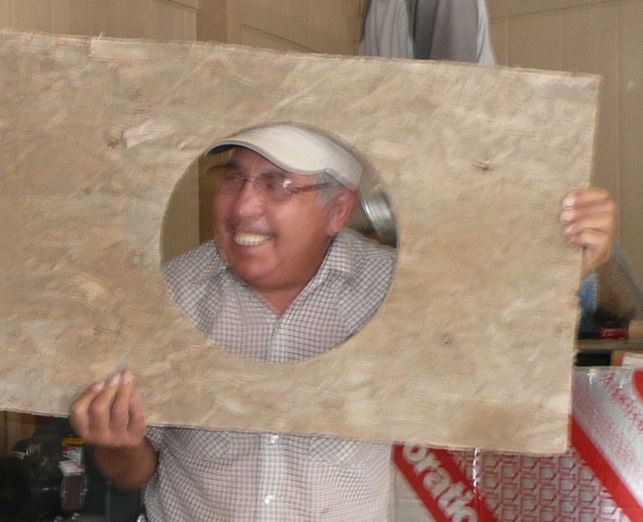NEWSLETTER – NOVEMBER 2024



Thank you Ernest! As most of you know, Ernest Valencia, was a member of our Lay Advisory Board when we moved to the current land in 2008 and since that time was the head mainte nance foreman for the construction of our current monastery in Gobernador. We appreciate all the work he voluntarily did for us, giving us advise and communicating with other building contractors. Many times, we would have to call him after off normal working hours to take care of no electricity, no water, etc. He was always very attentive to our building needs. In gratitude we ask God to bless Ernest abundantly with peace and good health!

From Our Prioress: Greetings from Gobernador! As you know our life here in Gobernador, New Mexico is dedicated to praising and worshiping God. Daily, I thank God during Lauds and Vespers for the many blessings we receive from God and the people. To mention a few of our blessings: The vocation to be a part of the Catholic Church, a Benedictine nun, beauty of the desert, the generous people who support our way of life in so many ways such as your generous financial gifts, groceries, work, etc. Others come to visit the monastery or spend time at the St. Benedict Guesthouse which bring us joy with their presence. Soon we will celebrate Thanksgiving Day. You and your loved ones will be remembered that day. I am sending you my heart filled gratitude and prayers. Sister Hilda

Retreat Time – Last month, we had our yearly retreat (Sept 9-12) with Fr. John Brahill, from Marmion Abbey, Aurora, Illinois. It was a time of deep refection and rest! We began the retreat with a DVD, “Paul Apostle of Christ.” Its an excellent movie about how Luke goes to Rome to visit Paul in prison. The movie captivates the death of Paul with Luke who persists in writing a book that described the birth of the Church. True episodes are found in the Acts of the Apostles; however, there are 13 books attributed to Paul the Apostle in the Epistles of Paul or Letters of Paul. Fr. John gave two conferences a day with written questions to think and pray about. One of the first questions after Fr. John spoke about the Emmaus Journey, was “How do you envision yourself ‘walking with Christ?’”

We Welcome New Saints – “I am a Christian and I will die as a Christian” These are the words of Blessed Manuel Ruiz López, who was superior to eight friars, his companions and three Maronites who were missionaries in Syria. On July 9, 1860, by the Druze, and other Muslim groups who opposed Christianity brutally tortured Manuel Ruiz and his companions for defending the Christian faith, “Martyrs of Damascus.” On October 20, 2024 Pope Francis decreed the canonization of not only Blessed Ruiz but two women. Blessed Elena Guerra, born in Italy (1835–1914) known as “an apostle of the Holy Spirit.” Also included Blessed Sister Blessed Marie-Léonie Paradis, from Canada, founder of the Little Sisters of the Holy Family. Her focus was to support educational work in Guatemala, USA, Italy, Brazil, Haiti, Chile, and Honduras. Included with the other saints, there is Italian Blessed Giuseppe Allamano, known as a father figure of Jeus, founded religious congregations for women and men. On November 1, All Saints Day, we pray: Lord, as the saints in Heaven adore You for eternity, I beg for their intercession. Saints of God, please come to my aide. Pray for me and bring to me the grace I need to live a holy life in imitation of your own lives.

Graduate – This year on May 11, 2024, The Saint Leo University in Florida, celebrated the achievements of more than 1,300 graduates. Our Sister Elizabeth Tran received her master’s degree in theology theological studies.

My Life as an Aspirant & Postulant by Irene Olotch – My life as an Aspirant began with a very warm welcome from the community in 2022. I am from Nairobi, Kenya, a country in East Africa, 9,000 miles from Gobernador, NM. Soon, after Mass before the midday, I was very happy to have begun a new stage in my religious life. The following week after I had joined, I began classes twice a week with my teacher, taking in all the subjects which were on Wednesdays and Thursdays as an Aspirant, which included the Rule of St. Benedict, his life as well as a class on the life in the community. On Saturdays we began group Lectio Divina with my teacher from 4-5 pm. As time went by, we were able to share the Gospel readings with the grace of God. After a year, I was admitted to the Postulancy, where I have learned that prayer comes with patience to accept challenges. As I begin the Novitiate, I pray that the Lord may continue to enlighten me. (Irene will enter the Novitiate on November 19, 2024, please pray for her.)


Piñon Pickers at the Monastery – The rich history of Piñon nuts dates back thousands of years found in the ruins of Pompeii. The piñon pine is the state tree of New Mexico, and the seeds have provided sustenance many years for the Native people and Hispanic settlers. Every year one can see parked vehicles along the side of many roads in our area. We have a beautiful pine tree right on our property in front of the St. Walburga building and you will find Sister Frances and Sister Elizabeth picking piñons.
